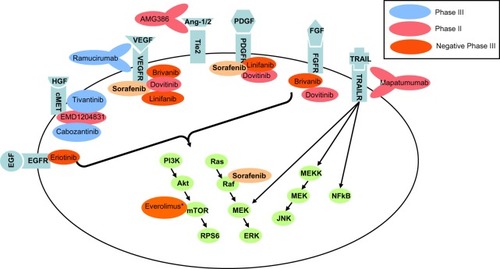Figures & data
Table 1 Efficacy of systemic targeted monotherapy in hepatocellular carcinoma according to current Phase I–III studies
Table 2 Efficacy of sorafenib and TACE or SIRT in hepatocellular carcinoma (sequential therapy not included), according to current Phase I and II studies
Table 3 Efficacy of combination therapy with systemic acting agents and targeted therapy in hepatocellular carcinoma, according to current Phase I–II studies.

